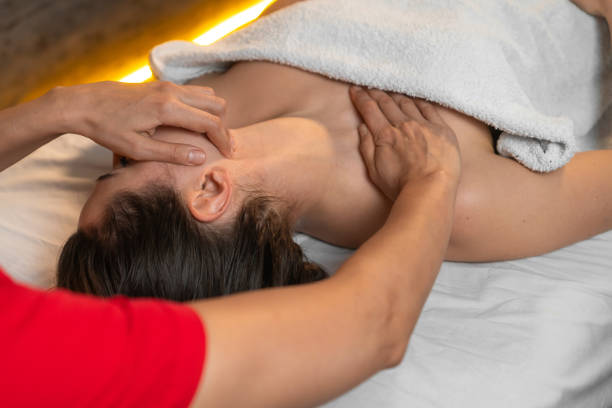In the world of sports and physical fitness, the importance of achieving and maintaining peak performance cannot be overstated. Athletes continuously push their bodies to the limits, aiming to maximize their potential, improve endurance, and recover from rigorous training. One powerful yet often underappreciated tool that can support these goals is massage therapy. Massage therapy is not just about relaxation; for athletes, it serves as an essential component in training regimens, recovery routines, and injury prevention strategies. Here, we’ll explore why massage therapy is invaluable for athletes seeking peak performance and how it addresses the unique needs of an active body.
1. Enhancing Muscle Recovery and Reducing Soreness
After intense training sessions or competitions, athletes often experience delayed onset muscle soreness (DOMS), which can last anywhere from 24 to 72 hours post-exercise. DOMS is caused by microscopic tears in the muscle fibers due to strenuous activity, resulting in inflammation and discomfort. Massage therapy helps alleviate this soreness by increasing blood flow and promoting faster muscle recovery. Techniques like deep tissue massage work to release muscle adhesions, which are tight, painful areas that hinder muscle flexibility and function. By promoting efficient blood flow and oxygen delivery to affected areas, massage therapy accelerates the healing process, reducing recovery time and enabling athletes to get back to training sooner.
2. Preventing Injury and Improving Range of Motion
One of the primary reasons athletes turn to massage therapy is its ability to help prevent injuries. Regular massage therapy sessions can identify and address areas of tension and tightness before they develop into strains or other injuries. For instance, tight hamstrings, hip flexors, or shoulder muscles are common problems for athletes that, if left unchecked, can lead to more serious injuries.
Massage therapy improves flexibility and range of motion, which is essential for reducing the risk of strains and tears. Techniques like myofascial release and stretching used in sports massage help to lengthen muscles and release any built-up tension in connective tissues. This increased flexibility supports better athletic performance, allowing athletes to move with greater ease and agility while minimizing the risk of injuries associated with restricted movement.
3. Boosting Circulation and Reducing Inflammation
For athletes, improved circulation is one of the main benefits of massage therapy. Effective circulation is crucial for the delivery of nutrients and oxygen to muscle tissues and the removal of waste products like lactic acid. Intense workouts often lead to a build-up of lactic acid and other waste products in the muscles, causing pain, stiffness, and fatigue.
Massage therapy enhances circulation by stimulating blood vessels and increasing the blood flow to muscles and joints. Enhanced blood flow not only helps with the removal of waste products but also reduces inflammation by promoting the body’s natural anti-inflammatory responses. This is particularly helpful for athletes, as it allows them to recover faster and return to peak performance with less downtime.
4. Alleviating Mental Stress and Improving Focus
Athletes are often under immense pressure to perform, which can lead to high levels of mental and emotional stress. Stress and anxiety can negatively impact focus, concentration, and overall performance. Massage therapy provides a natural way to alleviate stress and promote relaxation, offering significant mental benefits for athletes.
During a massage, the body releases endorphins and serotonin, which are chemicals that contribute to feelings of happiness and well-being. By lowering stress levels and enhancing mental clarity, massage therapy enables athletes to approach their training and competitions with a more focused, positive mindset. The relaxation achieved through massage also contributes to improved sleep quality, which is essential for physical recovery and mental sharpness.
5. Enhancing Athletic Performance Through Specific Massage Techniques
Massage therapy for athletes is often tailored to meet the demands of specific sports and individual needs. Sports massage, in particular, is designed to improve athletic performance by focusing on the muscle groups used in the athlete’s particular sport. For instance, runners may benefit from targeted massage on the lower body to relieve tightness in the hamstrings, quads, and calves, while a swimmer might require more attention to the shoulders and upper body.
Certain massage techniques, like trigger point therapy, help to release knots or trigger points that could be limiting range of motion or causing pain. Pre-event massages are also popular among athletes, as they use invigorating techniques to stimulate the muscles and warm up the body, preparing it for the demands of competition. Post-event massages focus on calming the muscles, reducing swelling, and aiding in recovery, providing a balanced approach that supports both performance and recovery.
6. Supporting Long-Term Physical Health and Career Longevity
One of the long-term benefits of massage therapy for athletes is its role in supporting overall physical health and extending career longevity. Physical sports can take a toll on the body, leading to cumulative stress on joints, muscles, and tendons over time. This is particularly true for high-impact sports or sports that require repetitive movements.
Regular massage therapy helps to mitigate the effects of wear and tear, preserving the structural health of the muscles and joints. By maintaining optimal muscle health and preventing chronic injuries, massage therapy enables athletes to sustain their physical condition, supporting career longevity and overall wellness.
7. Personalizing Massage Therapy for Each Athlete’s Unique Needs
No two athletes are the same, and each has unique physical needs depending on their body, sport, and fitness level. Massage therapists trained in sports massage know how to assess an athlete’s body and adjust techniques to target areas that need attention. For instance, an athlete recovering from an injury might benefit from a lighter touch with a focus on reducing inflammation and promoting healing, while a powerlifter preparing for competition might need deep tissue work to improve flexibility and muscle activation.
This personalized approach not only optimizes performance but also empowers athletes to take an active role in managing their own health and well-being.
Conclusion: A Key Component of Athletic Success
Massage therapy is much more than a luxury for athletes; it is a strategic and scientifically-supported method to improve performance, prevent injuries, and promote faster recovery. By incorporating massage therapy into their routines, athletes can benefit from enhanced physical function, improved flexibility, and a balanced mental state, all of which are essential for achieving peak performance. In an environment where even a small edge can make a difference, massage therapy provides the physical and mental support that athletes need to excel. As awareness of its benefits continues to grow, massage therapy at quality facilities, including leading spas in Chula Vista, is becoming an indispensable part of every serious athlete’s training toolkit.






